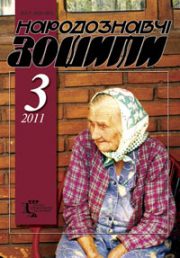The Ethnology Notebooks. 2017, 2 (134), 481—487
UDK 75/76.071.1.038(=161.2:494)
DOI https://doi.org/10.15407/nz2017.02.481
ZOYA LISOVSKA: SOURCES PASSION
Yatsiv Roman Myronovych, Vice-rector on the scientific work
of the Lviv National Academy of Arts,
Ph.D., associate professor,
Honored Worker of Culture of Ukraine.
Kubiiovycha Street 38, 79011, Lviv, Ukraine.
Contacts: e-mail: jaciv@ukr.net
ORCID ID: https://orcid.org/0000-0003-1509-5367
Abstract. The article is dedicated creative way Ukrainian artist Zoya Lisovska, which after the Second World War and still lives and works in Geneva (Switzerland). The main focus is on family and domestic factors shaping her creative identity as the daughter of famous artists — graphics, teacher and composer Robert Lisowski Stephanie Turkevych. The general structure of creativity Z. Lisovska as a painter, graphic, attempts to scientific interpretation of the most important works.
Keywords: Zoya Lisowska, painting, graphics, methodology, creativity, modernism, genrespecies structure, portrait, landscape, character, color and emotion.
Received 05.04.2017
REFERENCES
Vovk, V. (1962). Pro tvorchist’ Zoi Lisovs’koi. Suchasnist’, 5 [in Ukrainian].
K. (1964). Shansy odnoho maliarstva. Suchasnist’, 10 [in Ukrainian].







